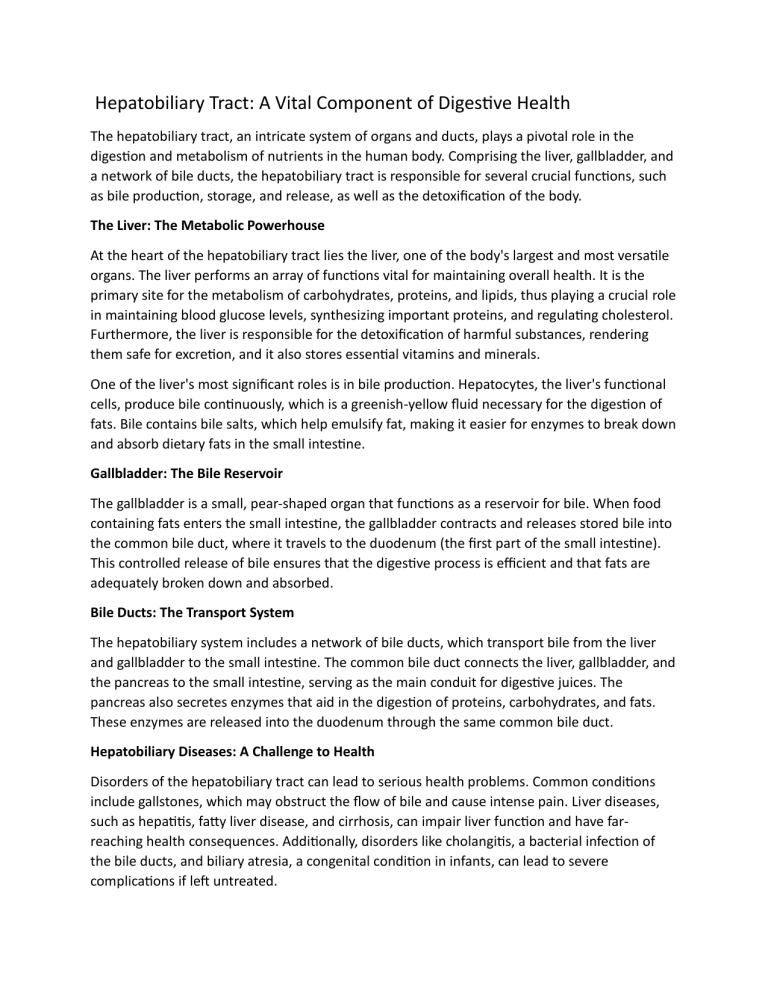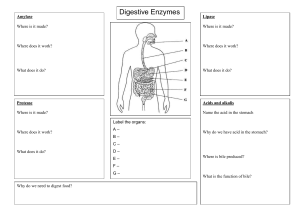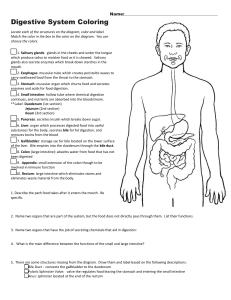
Hepatobiliary Tract: A Vital Component of Digestive Health The hepatobiliary tract, an intricate system of organs and ducts, plays a pivotal role in the digestion and metabolism of nutrients in the human body. Comprising the liver, gallbladder, and a network of bile ducts, the hepatobiliary tract is responsible for several crucial functions, such as bile production, storage, and release, as well as the detoxification of the body. The Liver: The Metabolic Powerhouse At the heart of the hepatobiliary tract lies the liver, one of the body's largest and most versatile organs. The liver performs an array of functions vital for maintaining overall health. It is the primary site for the metabolism of carbohydrates, proteins, and lipids, thus playing a crucial role in maintaining blood glucose levels, synthesizing important proteins, and regulating cholesterol. Furthermore, the liver is responsible for the detoxification of harmful substances, rendering them safe for excretion, and it also stores essential vitamins and minerals. One of the liver's most significant roles is in bile production. Hepatocytes, the liver's functional cells, produce bile continuously, which is a greenish-yellow fluid necessary for the digestion of fats. Bile contains bile salts, which help emulsify fat, making it easier for enzymes to break down and absorb dietary fats in the small intestine. Gallbladder: The Bile Reservoir The gallbladder is a small, pear-shaped organ that functions as a reservoir for bile. When food containing fats enters the small intestine, the gallbladder contracts and releases stored bile into the common bile duct, where it travels to the duodenum (the first part of the small intestine). This controlled release of bile ensures that the digestive process is efficient and that fats are adequately broken down and absorbed. Bile Ducts: The Transport System The hepatobiliary system includes a network of bile ducts, which transport bile from the liver and gallbladder to the small intestine. The common bile duct connects the liver, gallbladder, and the pancreas to the small intestine, serving as the main conduit for digestive juices. The pancreas also secretes enzymes that aid in the digestion of proteins, carbohydrates, and fats. These enzymes are released into the duodenum through the same common bile duct. Hepatobiliary Diseases: A Challenge to Health Disorders of the hepatobiliary tract can lead to serious health problems. Common conditions include gallstones, which may obstruct the flow of bile and cause intense pain. Liver diseases, such as hepatitis, fatty liver disease, and cirrhosis, can impair liver function and have farreaching health consequences. Additionally, disorders like cholangitis, a bacterial infection of the bile ducts, and biliary atresia, a congenital condition in infants, can lead to severe complications if left untreated.





